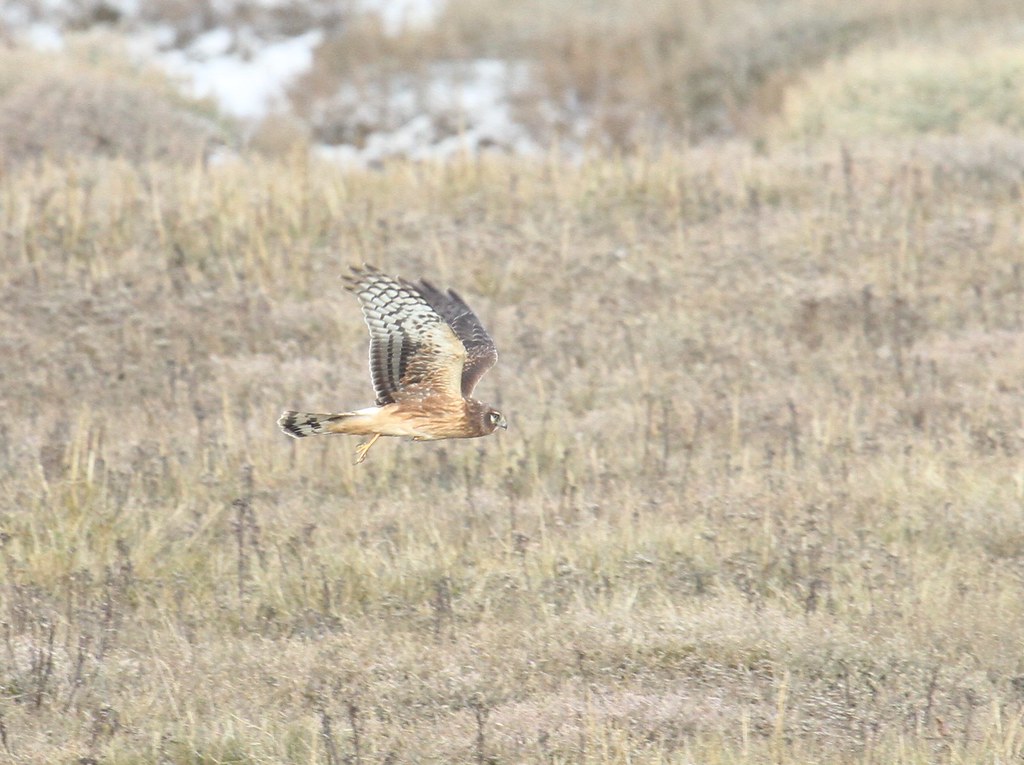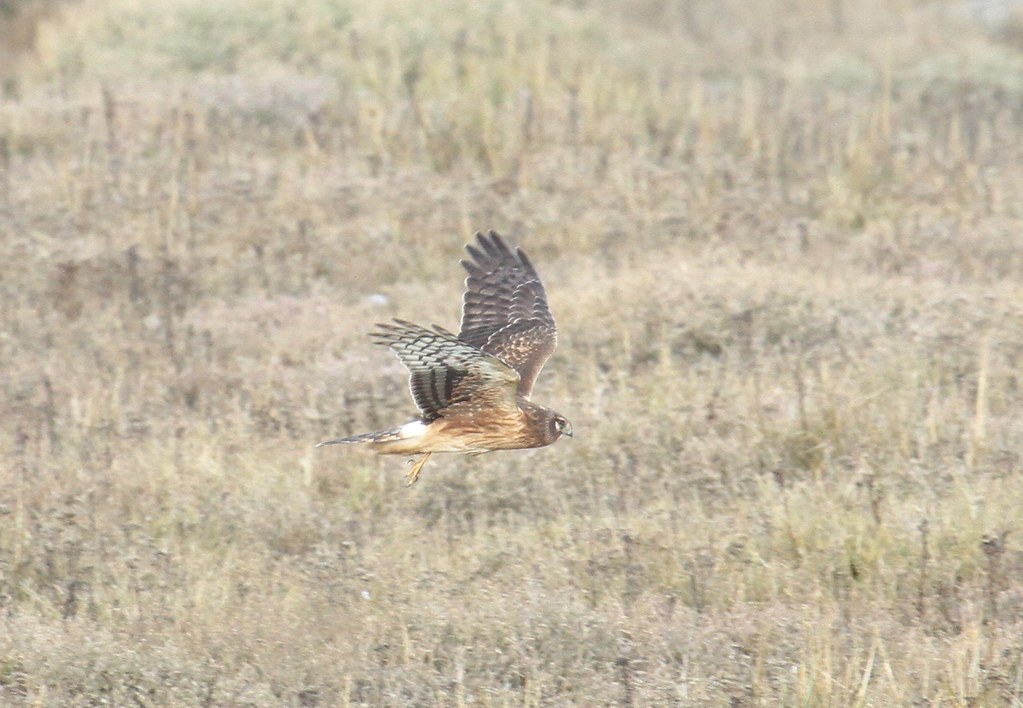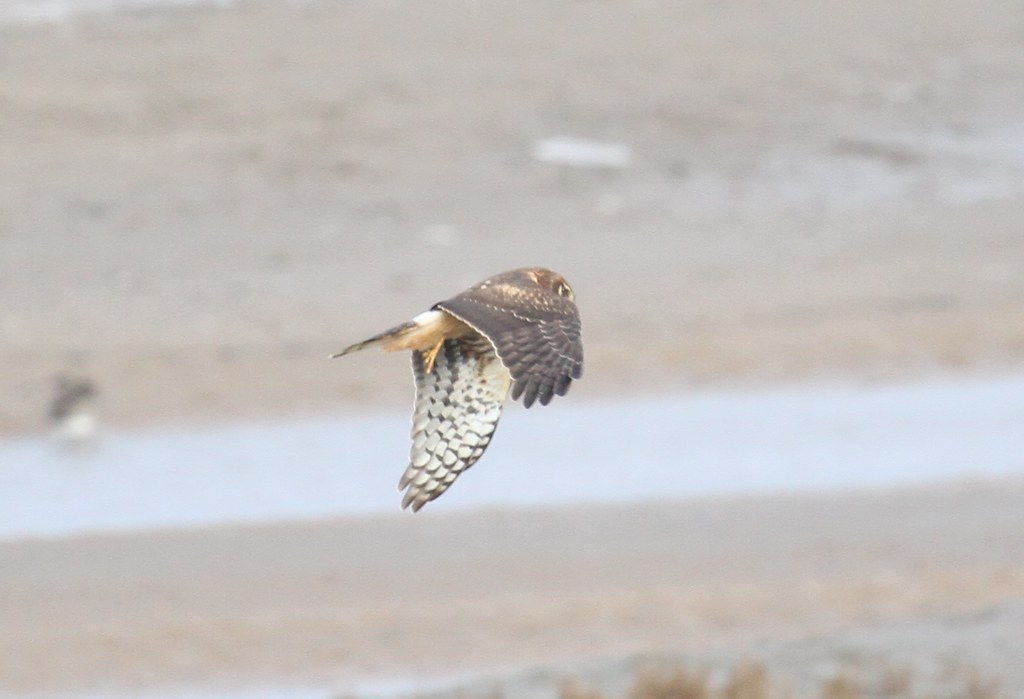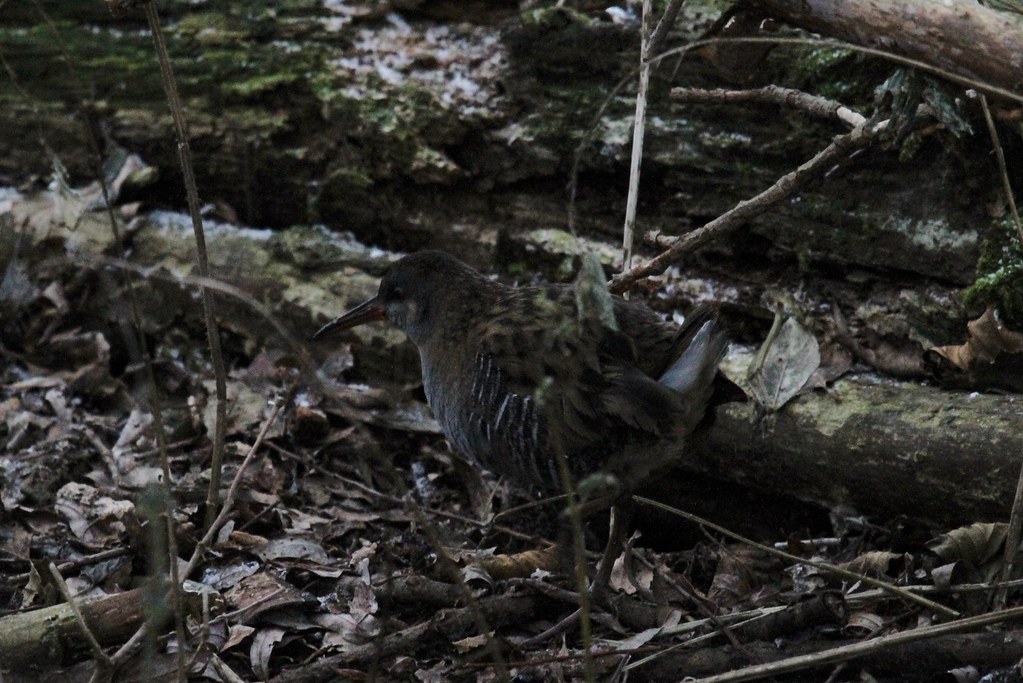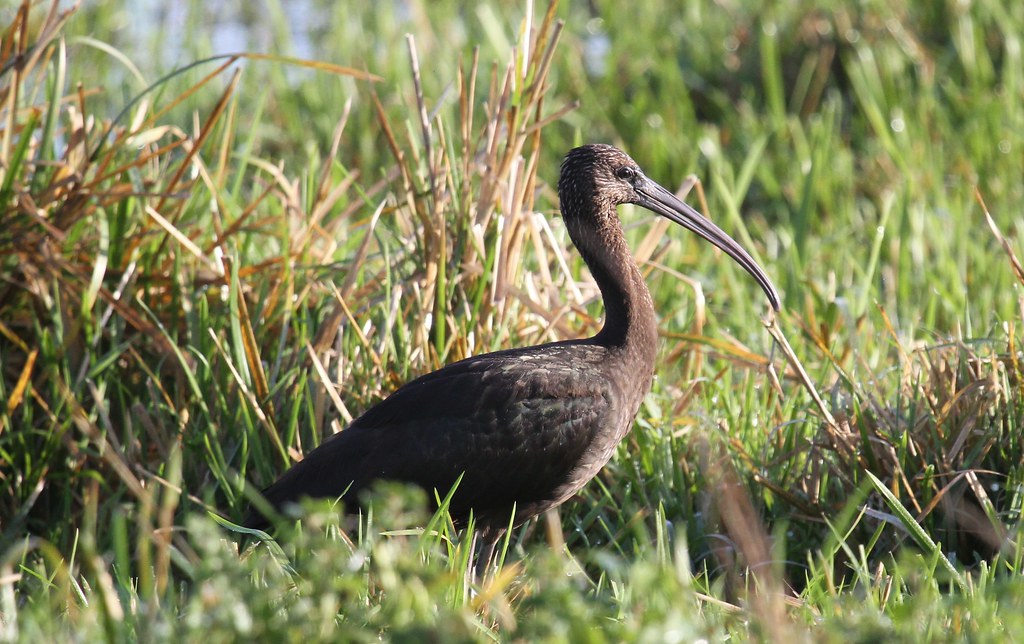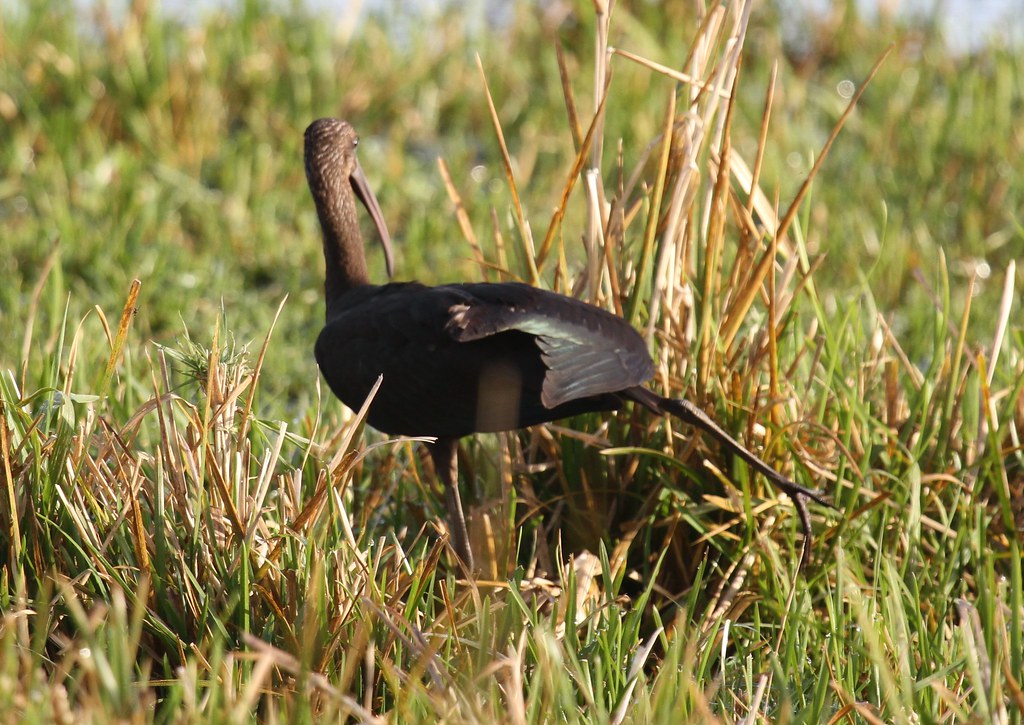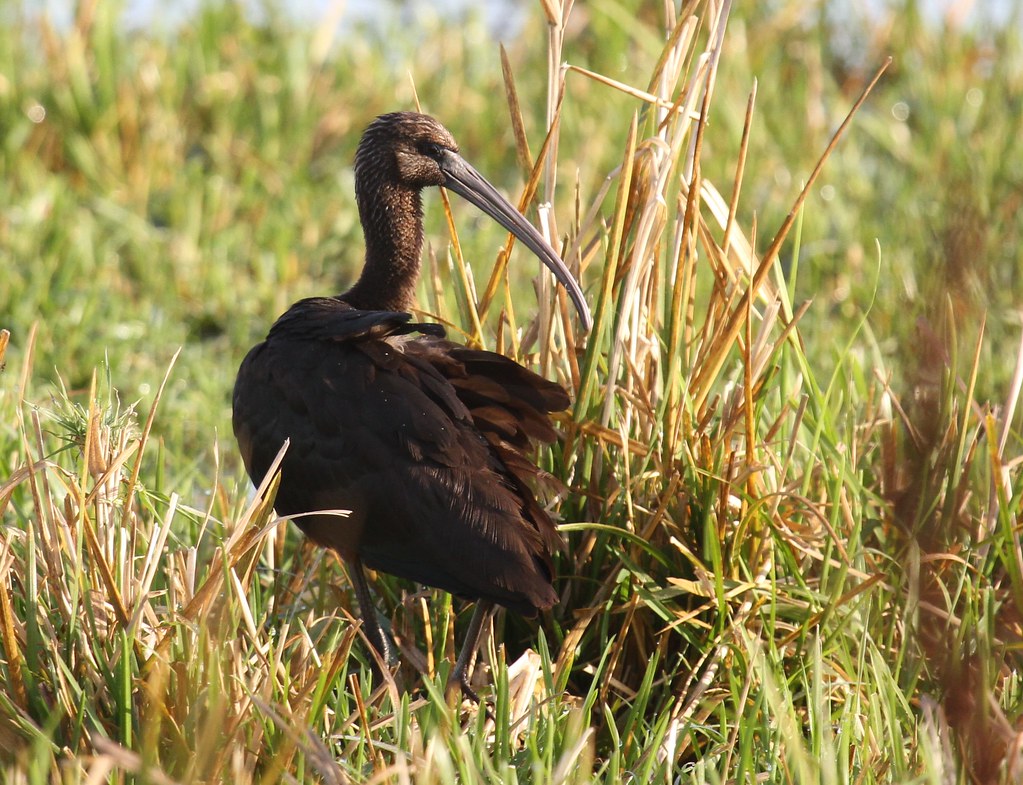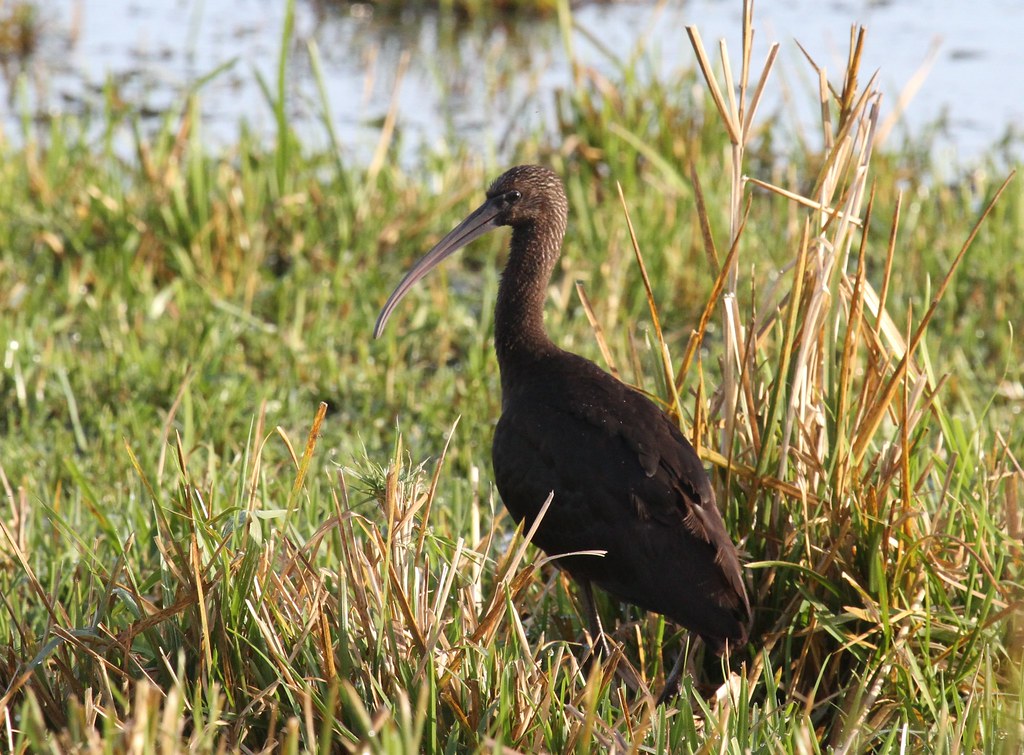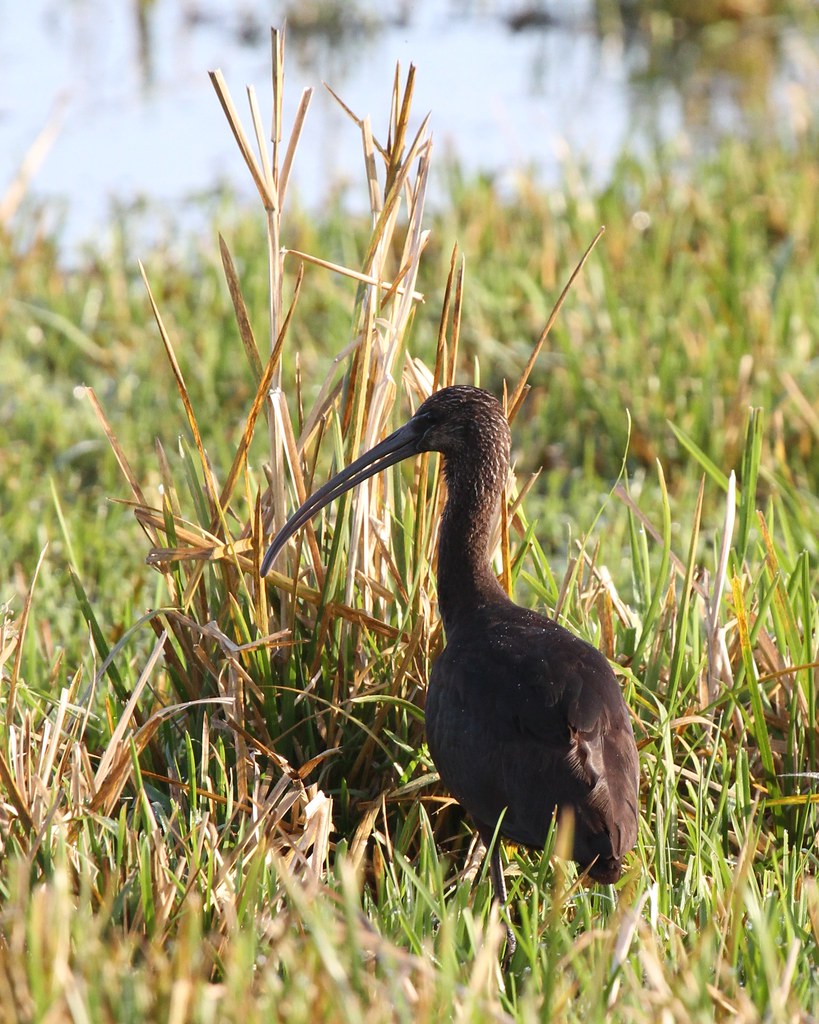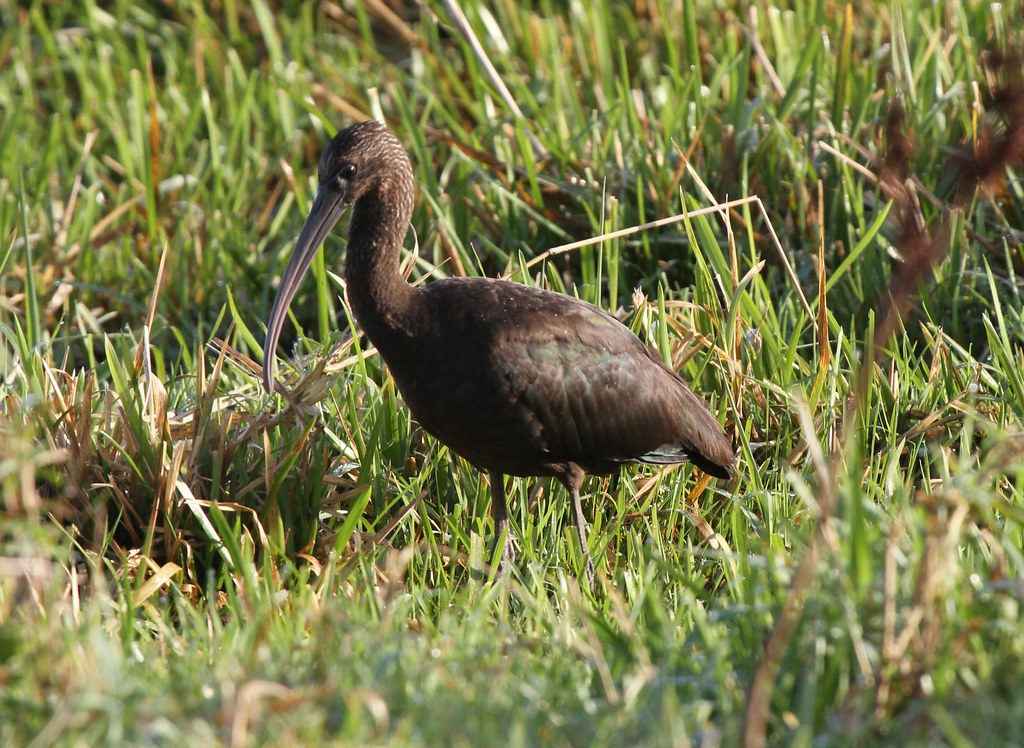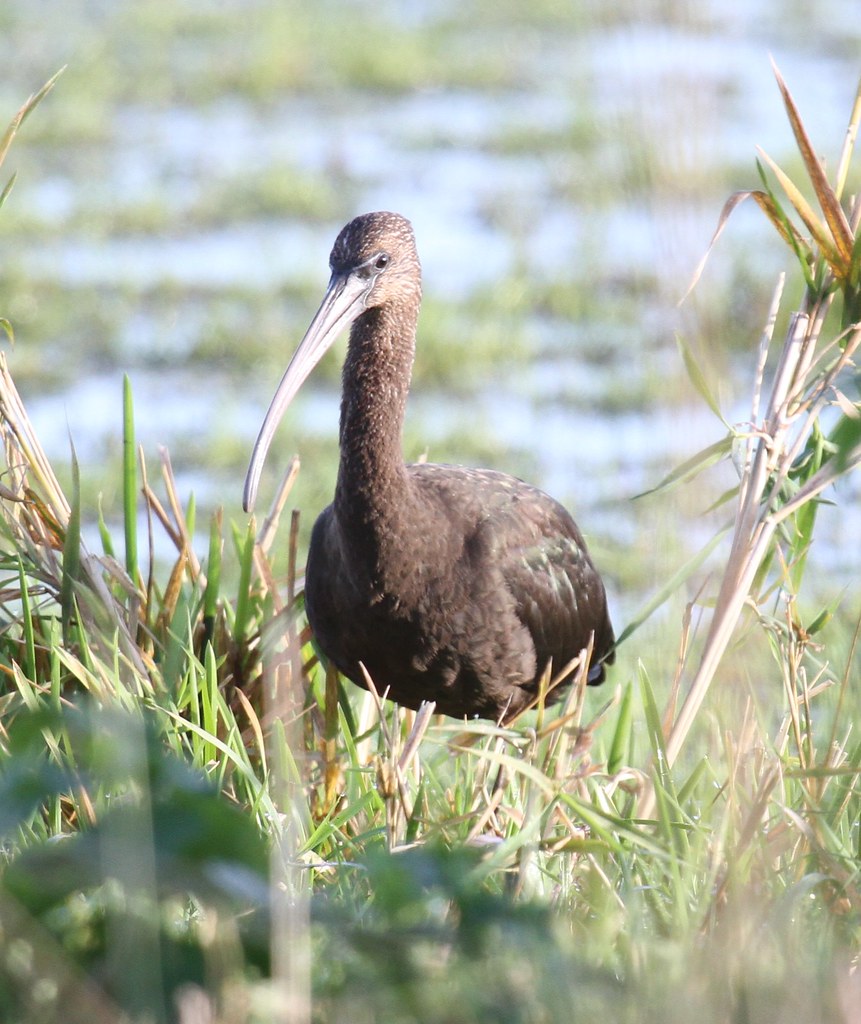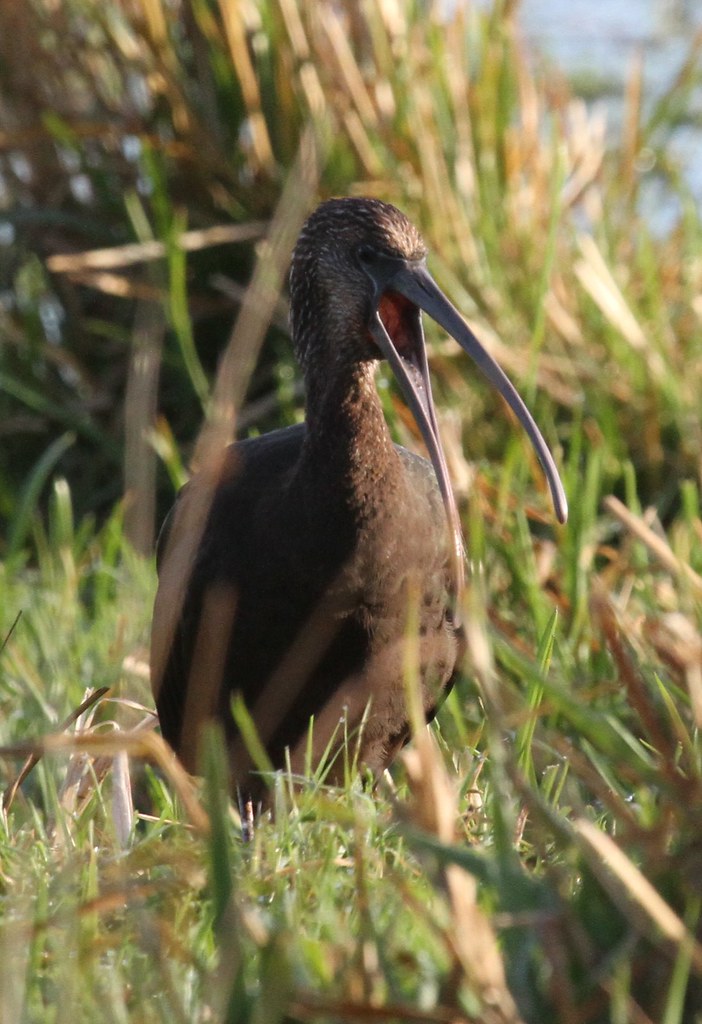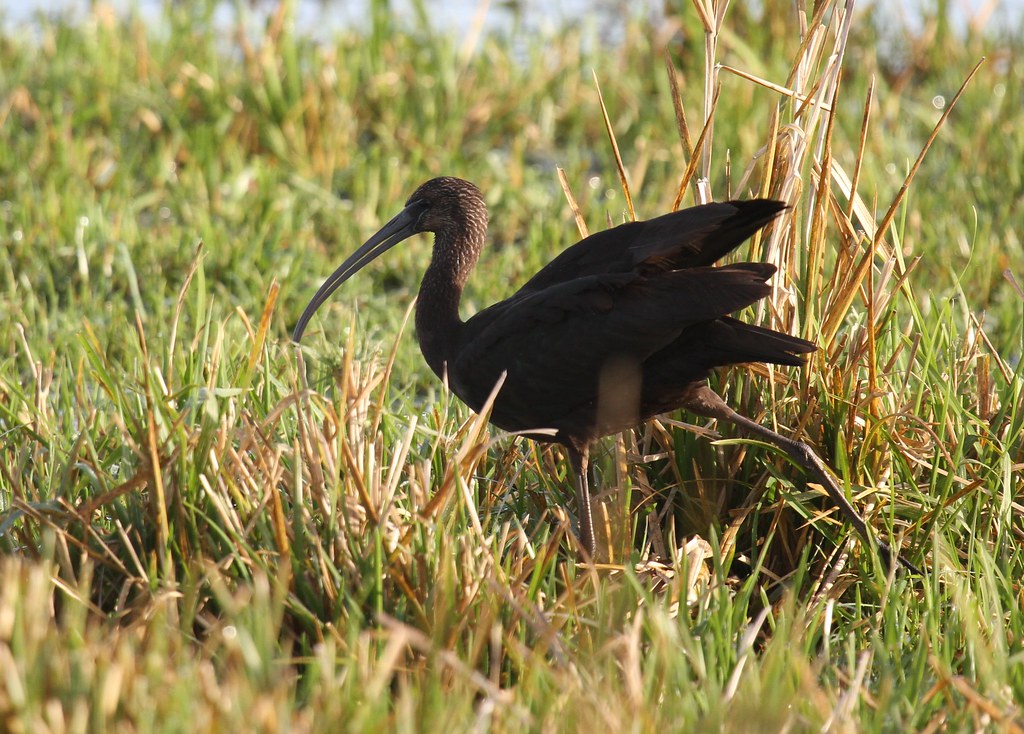After having a wasted journey into London yesterday for the cancelled Arsenal v Stoke game, I hoped to have a slightly less wasteful day today by heading up to Thornham Marsh and try to get some better views of the Northern Harrier that has been hanging around in Norfolk since October. Mark Golley and I saw the bird a few weekends ago at Stiffkey, but the views weren't great and I wanted to see the bird a bit better. After standing around in temperatures well below zero the bird appeared and promptly dumped itself onto the side of a water channel, where it sat in the open for about half-an-hour giving really nice views. After this the bird got up and spent some time hunting around the harbour, west towards Holme and then headed off towards Titchwell (from where I saw it again later). There were two other ringtail Hen Harriers around too, giving a good comparison to the much darker, rufous Northern Harrier.
Most of Titchwell was frozen over, but there were 3 Water Pipits showing well from the shiny new Parinder Hide on the Saltmarsh and 15 Twite flew over calling. There were a few hundred Common Scoter on the sea, but there was a bit of a swell so it was really hard to look through them for anything more interesting.
Finally, on the way back to the reserve visitors centre, there were a couple of Water Rails showing quite well in the ditches near the feeders.
Dig Deep has moved!
11 years ago
